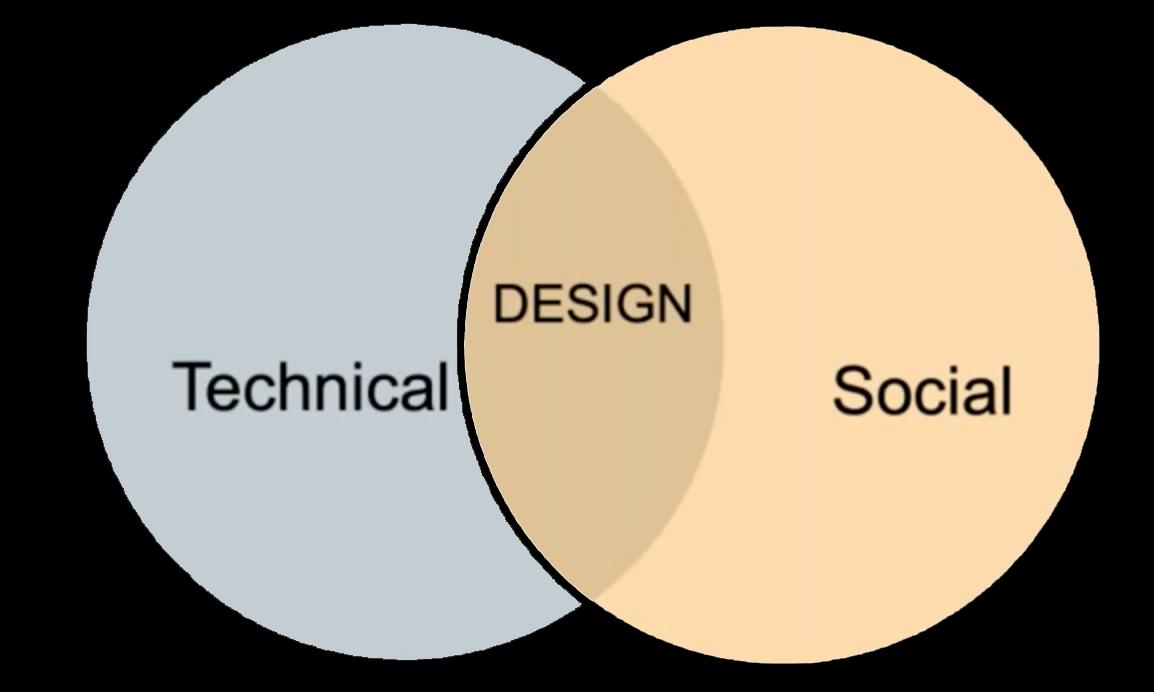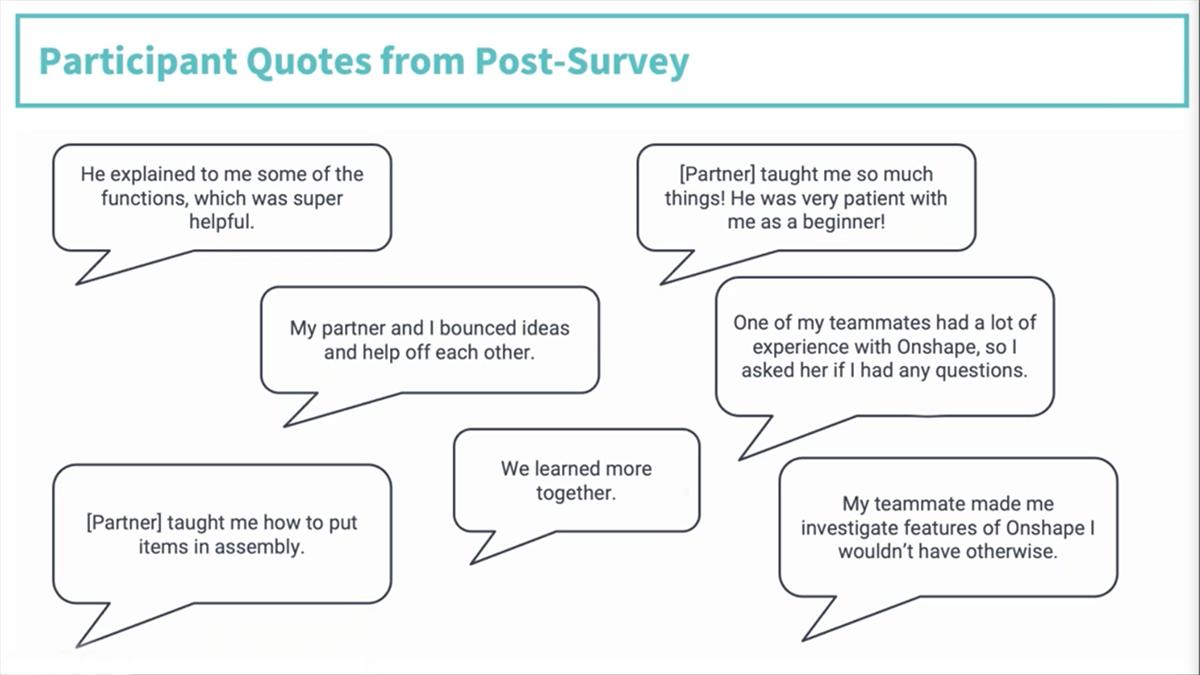
4:39
At the heart of design is collaboration.
When computer-aided design (CAD) entered the engineering scene, educators worried design would become too individual and too solitary. They worried students would focus on only the computer screen, filtering out ideas from peers and relying solely on what the computer says.
“The shift to a computer workstation-based tool was quite jarring for some folks,” said Dr. Alison Olechowski during an Onshape webinar. Olechowski, an assistant professor at the Department of Mechanical & Industrial Engineering at the University of Toronto, shared her insights on CAD’s impact and role in design education.
Educator’s worries were not unfounded, Olechowski noted. CAD use was viewed as a solitary, technical skill.
In fact, Olechowski found through her research there has been a separation in the way design is taught. After CAD became the norm, educators have been teaching “hard, technical” skills and “soft” skills associated with teamwork and collaboration as two separate skill sets. However, both need to be taught in tandem to meet the reality of creating good design, she said.
The separation of “hard” and “soft” skills in education. Source: Alison Olechowski

“The modern engineering industry recognizes that the best work gets done not by an individual working by themselves, but on a team,” she said.
Not only is collaboration key for the end goal, but also for the learning process, specifically peer learning.
“Via peer learning, students learn collaboration, cooperation, and they gain experience and work together to reach mutual goals,” she said. “It turns out that peer learning provides increased opportunities for students to engage in reflection and exploration of ideas.”
Olechowski shared her research supporting the case to increase engineering collaboration in the CAD classroom.
Study 1: Collaboration in CAD
Olechowski and her research team wanted to see if collaborative work had any advantage over solitary design.
By taking inspiration from paired programming – where pairs of students work together to create code – researchers teamed up with Tufts Center for Engineering Education and Outreach to test whether multi-user CAD engineering collaboration benefitted students in any way.
To get a deeper understanding, they used Onshape, which allowed students to work on a model at the same time, and gave the research team access to the CAD data needed to analyze student actions. With Onshape Education Enterprise Analytics, they were able to export an Audit Trail of all actions each student took, then analyze their CAD work (sketching, mating, browsing, etc.) to gain insights into how students were learning and using Onshape.
Students were paired up and directed to design a playground in CAD in 90 minutes. Students self-identified as a novice or expert CAD users, so there was a mix of skills within each pair.
Olechowski’s team found that teams of two experts, as well as teams of an expert and novice, performed more construction activities than teams of two novices.
Comments from students who participated in the study. Source: Alison Olechowski

“The fact that novices who are partnered with experts perform more constructive actions makes us think that this might be a neat way that apprenticeship-style learning is happening in a collaborative CAD environment,” Olechowski said.
Study 2: “The CAD Guy”
“The CAD Guy '' is the team member who begins the CAD model on his workstation and gatekeeps the work, Olechowski said. This phenomenon prevents cohesive engineering collaboration among design teams, which is compounded by traditional CAD software that isn’t easily accessible.
This study, conducted with the help of data from a research study conducted at Technion - Israel Institute of Technology, explores whether “The CAD Guy” exists in scenarios where designers had the same access to the CAD project.
The results, Olechowski shared, show “The CAD Guy” still exists in every group.
“This should be interesting, as educators, to have the transparency to know that this is happening,” she said. “This is really informative to what we can do to help our teams and to make sure that no one is getting left behind in our class.”
Deeper Dive: Learn more about Olechowski's research by watching the full webinar, “Onshape Insights - Understanding Student Learning with Analytics,” for free.
The Power of Onshape Analytics
These studies show how important it is for educators to ensure students get the most out of a CAD course.
“CAD has changed,” Olechowski said. “We can bring together the social and the technical when we're teaching design and CAD teams can collaborate with CAD, for example, in Onshape.”
Olechowski was able to make deep discoveries into learning behaviors by taking advantage of Onshape’s unique cloud-native architecture. Educators can too.
With Onshape, teachers can see how students are actually collaborating with each other as well as how they’re interacting with the platform. If you're already an Onshape educator, there are several ways to access information:
- Versions and History Dialog: Shows all of the different versions or branches of a model and who made the changes.
- Performance Tab: Shows performance data of a browser and internet speed, as well as a readout of the features that are being used in a document.
- Onshape Rest API: Access Bill of Materials information, feature lists details, geometry definitions, and more.
- Built-in Activity Overview: Quickly view the activity of all accounts associated with an enterprise, including where users are logging in, what documents are active, how much time users spend in the platform and more. Only available to Onshape Enterprise accounts.
If you're not yet using Onshape in the classroom, learn why millions of educators around the world are tapping into the power of Onshape.
Onshape for Education
Get started with Onshape and join millions of students and educators worldwide.
Latest Content

- Case Study
- Automotive & Transportation
Zero Crashes, Limitless Collaboration, One Connected Workflow With Cloud-Native Onshape
12.04.2025 learn more
- Blog
- Aviation, Aerospace & Defense
- Branching & Merging
- Custom Features
- Learning Center
- Onshape Government
Why Aerospace & Defense Teams Choose Onshape for Product Development
12.18.2025 learn more
- Blog
- Evaluating Onshape
Cloud-Native CAD 2025 Wins: Revenue Growth, Real-Time Collaboration, Unified CAD-CAM
12.17.2025 learn more
- Blog
- Becoming an Expert
- Assemblies
- Simulation
Mastering Kinematics: A Deeper Dive into Onshape Assemblies, Mates, and Simulation
12.11.2025 learn more


